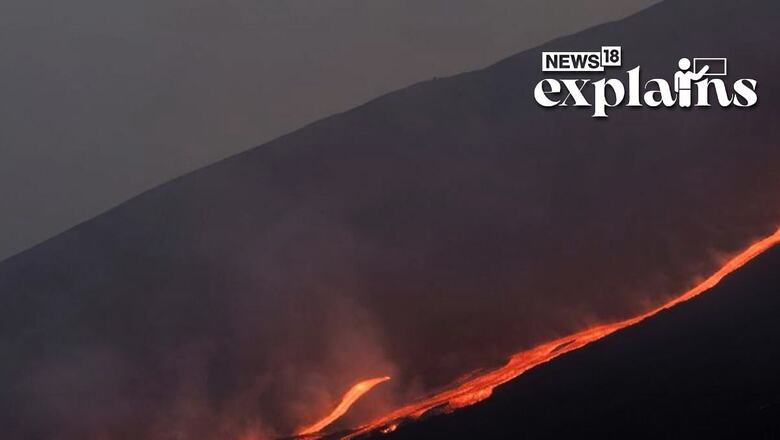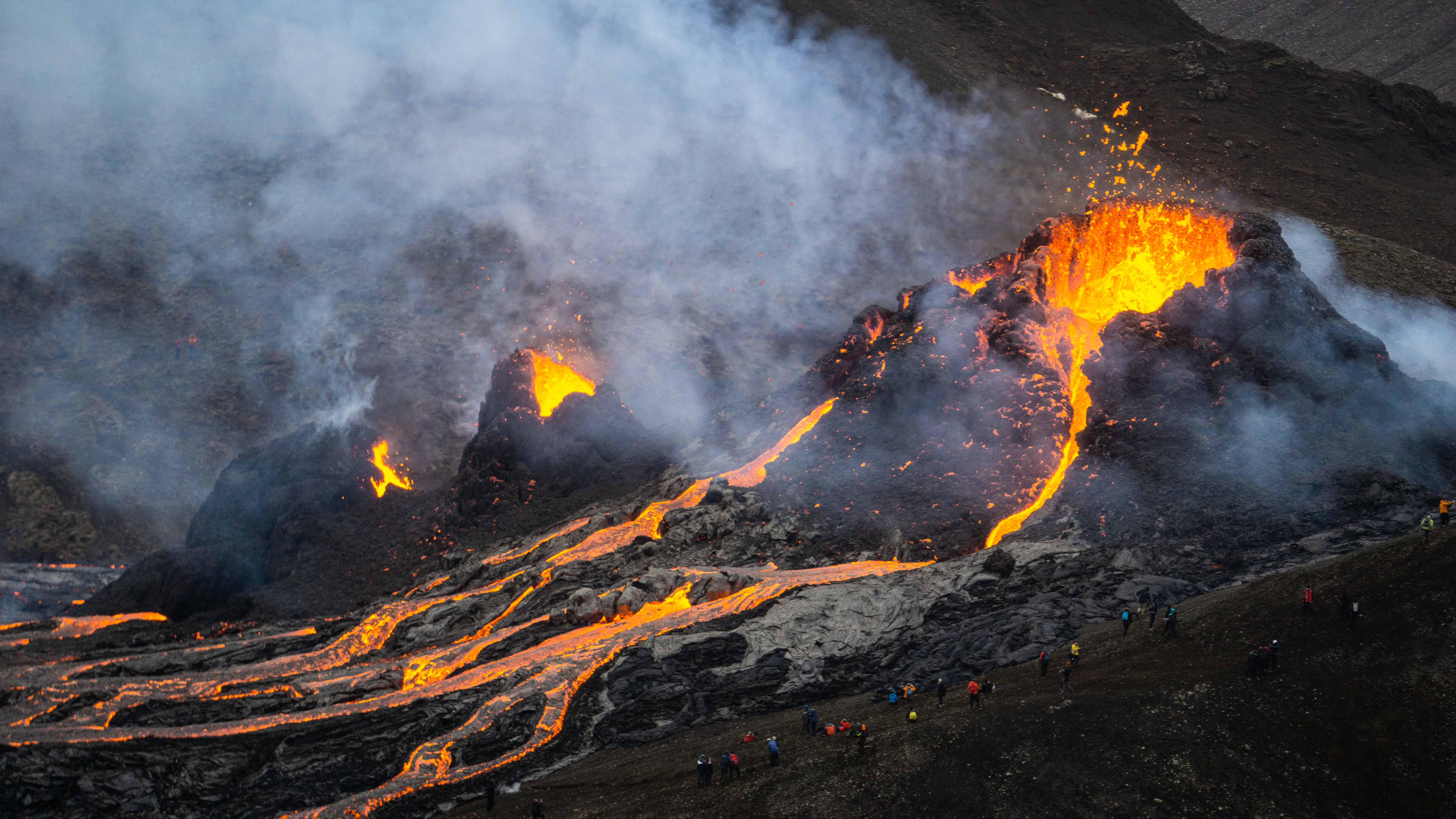
views
The skies over Catania were shrouded in a dramatic display as Mount Etna unleashed its fury on Sunday, May 21. The eruption blanketed the city in thick clouds of smoke and ash, creating an otherworldly scene. Astonishing footage captured the aftermath, revealing a thick layer of lapilli, or hardened lava, coating cars parked near the mountain. The eruption had a significant impact on air travel, with flights temporarily halted at Catania airport due to the ash settling on the runway. Fortunately, there have been no reports of injuries resulting from the eruption. The increased tremor activity recorded in recent days by Italy’s National Institute of Geophysics and Volcanology (INGV) serves as a stark reminder of the ever-present power and unpredictability of Mount Etna.
How Did Etna Erupt?
Italy’s National Institute of Geophysics and Volcanology, or INGV, which closely monitors Etna with instrumentation on the slopes, noted that cloud cover on a rainy day was impeding views of the eruption, which often serves up a spectacular display of flaming lava during the volcano’s not infrequent eruptions.
The institute said that ash had fallen on Catania and at least one town on Mount Etna’s inhabited slopes. No injures were reported.
Catania airport said due to ashfall, flight operations were temporarily suspended.

INGV indicated that monitoring had recorded evidence of a stepping up in tremor activity in recent days.
People in the towns of Adrano and Biancavilla reported hearing loud booms emanating from the volcano on Sunday, the Italian news agency ANSA said.
Italy’s national Civil Protection agency had noted on Thursday in an alert that in view of increased volcanic activity, “sudden” variations of Etna’s activity could occur.
In early 2021, an eruption of the volcano lasted several weeks.
What is a Volcano Eruption and What Causes it?
Volcanoes are openings on the surface of planets or moons that allow the escape of hot material from their interiors. They can cause explosive eruptions, launching materials high into the sky, or gentler flows of material.
Volcanoes can be categorized as active, dormant, or extinct based on their eruption history.
Volcanic Formation and Characteristics
- Volcanic areas are often characterized by mountains formed from layers of rock, ash, or other materials surrounding the volcanic opening.
- Active volcanoes have experienced recent eruptions or are anticipated to erupt in the near future.
- Dormant volcanoes have ceased erupting but may erupt again in the future.
- Extinct volcanoes are unlikely to erupt again.
Causes of Volcanic Eruptions
Volcanic eruptions occur when significantly hotter material from the planet or moon’s interior is expelled onto the surface.
On Earth, erupted materials include liquid rock (lava/magma), ash, cinders, and gases, as per a report by NASA.
Magma rises and causes eruptions through three main mechanisms:
a) Diverging Tectonic Plates: Magma rises when tectonic plates move apart, creating space for magma to fill in, often resulting in underwater volcanoes.
b) Converging Tectonic Plates: Magma rises when tectonic plates collide, causing crustal melting and subsequent magma ascent.
c) Hot Spots: Magma rises over hot spots, areas within the Earth that generate intense heat and lower magma density, promoting upward movement.
Volcanoes, driven by the forces deep within the Earth, are remarkable manifestations of nature’s power and continue to shape our planet’s landscapes.
Some Interesting Facts About Volcanoes
- Overnight Wonders: While some volcanoes take thousands of years to form, others can emerge practically overnight. Take the case of Paricutin, a cinder cone volcano in Mexico. It sprouted from a cornfield on February 20, 1943, and within a week, it stood 5 stories tall. In just one year, it reached a towering height of over 336 meters, according to a report by Universe Today.
- Devastating Volcanoes: Certain volcanic eruptions throughout history have proven to be exceptionally deadly. The eruption of Krakatoa in 1883 unleashed a tsunami that claimed the lives of 36,000 people. The infamous eruption of Mount Vesuvius in AD 79 buried the towns of Pompeii and Herculaneum, resulting in the deaths of 16,000 people. Another tragic event occurred when Mount Pelee, located on the island of Martinique, destroyed an entire town with a population of 30,000 in 1902. The greatest peril associated with volcanoes is the occurrence of pyroclastic flows, which are deadly mixtures of ash, rock, and water traveling at astonishing speeds of hundreds of kilometers per hour, with temperatures exceeding 1,000 degrees Celsius.
- Volcano Explosivity Index: Geologists utilize the Volcano Explosivity Index (VEI) to gauge the intensity of volcanic eruptions based on the amount of material released. For instance, the eruption of Mount St. Helens in 1980 was classified as a VEI 5 out of 8, spewing approximately one cubic kilometer of material. However, the largest eruption ever recorded was that of Toba, estimated to have occurred 73,000 years ago. Toba released over 1,000 cubic kilometers of material and formed a colossal caldera measuring 100 kilometers in length and 30 kilometers in width. This cataclysmic event triggered a worldwide ice age, making Toba an extreme VEI 8 eruption, the report says..
- Mars Takes the Crown: The title of the tallest volcano in the Solar System goes to Olympus Mons, located not on Earth but on Mars. This colossal shield volcano towers to a remarkable elevation of 27 kilometers and spans an impressive diameter of 550 kilometers. Scientists attribute the massive size of Olympus Mons to the absence of plate tectonics on Mars. With only a single hotspot active for billions of years, the volcano was able to grow and grow without interference.




















Comments
0 comment